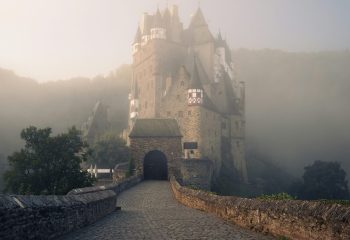
It’s a long-standing trope in Fantasy, where the “modern” age is but a dim reflection of a more legendary and mythical time, from times as early as Mesopotamian God-Kings who ruled thousands of years ago to Plato’s writings of Atlantis. This trope has been with us probably as long as stories have been passed down around campfires by early mankind. It’s an enduring fixture of fantasy, and I think it belongs in our world-building.
My own homebrew setting, Scharnland, is set in a land that was once a powerful kingdom long since lost to time. The Heroes haven’t explored any of it yet, and it’s too early in the campaign, but it is lingering out there for them to discover. I’ll delve more into Scharnland in future posts, but it’s a bunch of random notes in a dozen places. I really need to get more organized.
Look at a few popular examples of living in the shadows of legends.
The Lord of the Rings is basically a reflection of The Silmarillion, one that is not as mythical and legendary. It is told during a time when magic was waning from Middle-earth and the time of man had begun. Then there is Final Fantasy XIV, a masterpiece in telling stories about ancient civilizations. I won’t go into it here as it’s highly detailed elsewhere, but the layers of lost civilizations are a foundational part of the series.
In the TTRPG space, prominent examples include the Forgotten Realms, which has a dizzying number of ancient, powerful civilizations. Expedition to the Barrier Peaks is an adventure in which the party gets to loot a spaceship! Numenera takes place in the Ninth World because eight other civilizations have risen and fallen before the setting takes place (a billion years into our future).
It’s not just fantasy, either. Proposed in 2018 by astrophysicist Adam Frank and Climate scientist Gavin Schmidt, the Silurian Hypothesis is a thought experiment that asks if an advanced civilization could have existed on our own Earth millions of years ago and left no trace, not to mention out-of-place Artifacts!
Now, let’s explore a few ways we can use ancient, powerful civilizations as inspiration for our world.
1. Dungeons as Survival Shelters – FASA, Inc., in Earthdawn TTRPG, has done this very well. A convergence between corrupt astral space and the physical plane of existence is on the verge of happening. There is no way civilizations can survive in the open through some inception-style past legendary age manuscript. They find instructions on how to survive the coming apocalypse. They build these giant underground complexes protected by elemental forces to withstand the coming Horrors. Hundreds of years pass, and finally, the magical level lowers enough for people to escape their hiding spots. Well, not all of those places survived intact. The Horrors infiltrated before they were closed; the protection spells were not performed correctly, and some just brute-forced their way inside. Needless to say, these are the Dungeons of Earthdawn. Hey, neat, there is a reason there are nasty, horrific things underground in labyrinths filled with treasure for our Heroes to explore.
2. Plot McGuffins galore – Another easy way to incorporate an ancient, powerful civilization in your game is the simple Plot McGuffin. The Heroes must deliver a green chip with strange gold and silver inscriptions to the recently found Temple of Doss to reawaken an Oracle and solve a riddle. It’s a bit gonzo, but I like a little gonzo in my games. Maybe that will be the next world-building post – bringing Gonzo fantasy to your Draw Steel table!
3. Enemies reawaken – Either actual people from the ancient civilization that were in some form of suspended animation or undead abominations from a distant past (probably the result of a horrific military experiment gone wrong). A singular big bad guy from a distant past, bent on turning back the sands of time to return this forsaken land to its former glory, to the horde of ancient vampires who were driven into a slumber long ago when the younger races forced their way into the Kingdom of Axul. Hey, the vampires were once the most advanced civilization for thousands of years! Then those upstarts just went in, burning down libraries and laboratories.
4. The Cycle – Things in fantasy often are cyclical in nature. In the distant past, a dark god rebelled against the other gods and went to the physical realm. The big G doesn’t want his little g family to interfere with mortals or their affairs. So they get mortal agents, maybe long-lived, powerful mortals like True Elves or some giant birds, to do their bidding. Finally, the dark god is defeated, but his second in command survives, and thousands of years later, he tries to take over the mortal realms again. Well, it’s been so long that the long-lived ancient heroes are fading from existence or beyond their years. So now it’s time for new, less powerful, less informed, simple mortals to get in over their heads and defeat the new dark god. Sounds pretty familiar? Well, maybe the Heroes are those new, less powerful, less informed mortals, a shadow of the former heroes of a more mythic age. Standing up and fighting against a mere shadow of a once much more formidable villain.
I am sure there are more ways that we can use ancient cultures and civilizations to improve our worldbuilding. I’d be interested in hearing your thoughts and suggestions. Until we meet again, keep your blade sharp and be prepared to Draw Steel.